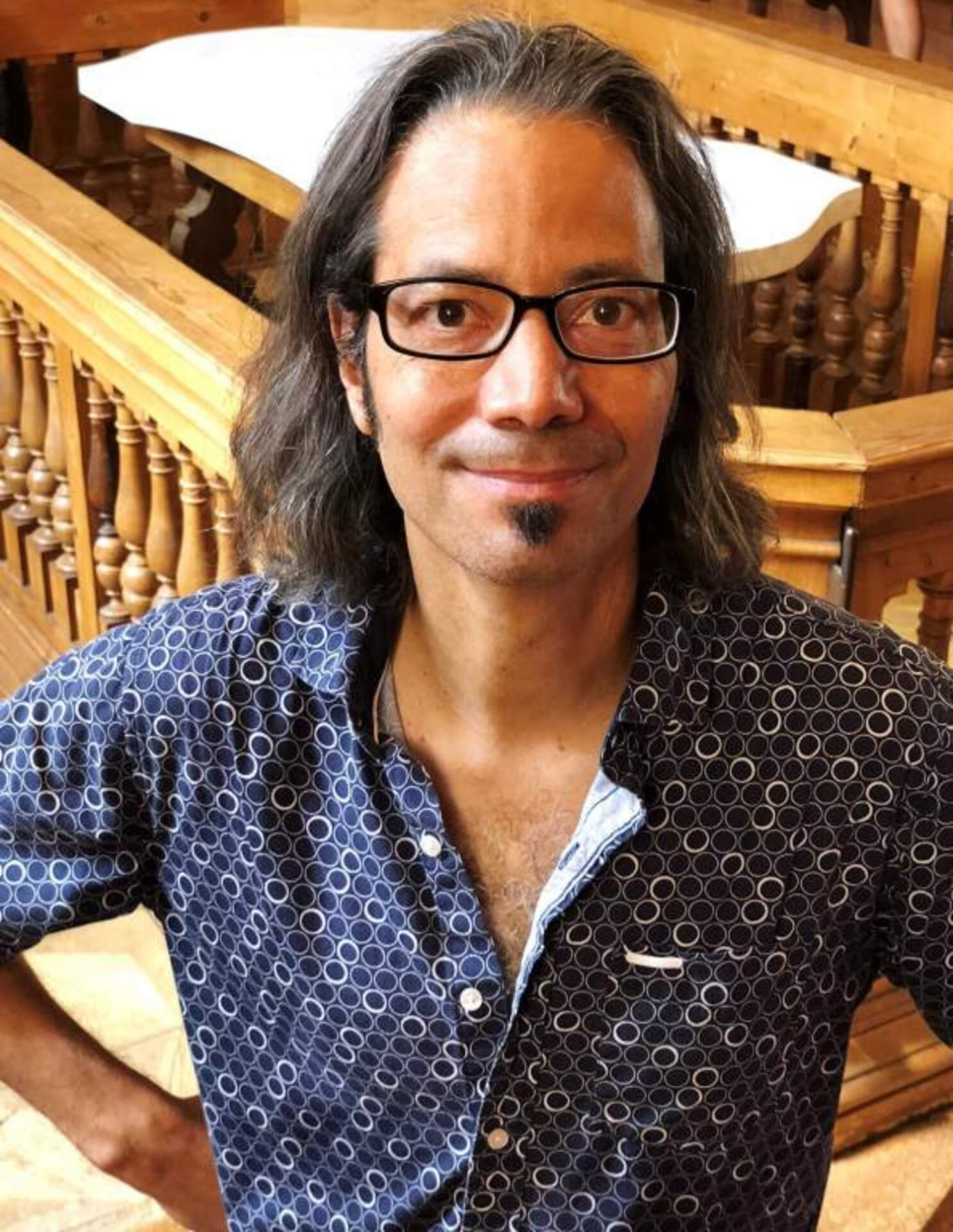Paul Vanouse
Paul Vanouse is a professor and biological multimedia artist, whose work combines contemporary biochemical and medical research with emerging media forms.[1] Exploring these art forms since 1990, Vanouse’s work analyzes the intersections between science and humanity, using experimentation as a means to understand the development of bio-technology and its larger cultural implications.[2]
Vanouse’s combination of investigation, scientific manipulation and multimedia help bridge the gap between cultural discourse and the realm of science. His instillations provide context to the interdisciplinary role developing science technologies play in our current cultural forces at hand.
“For well over a decade, Vanouse has been specifically concerned with forcing the arcane codes of scientific communication into a broader cultural language. In The Relative Velocity Inscription Device (2002), he literally races DNA from his Jamaican-American family members, in a DNA sequencing gel, in an installation/scientific experiment that explores the relationship between early 20th Century Eugenics and late 20th Century Human Genomics. The double entendre of race highlights the obsession with ‘genetic fitness’ within these historical endeavors.”[3]
Vanouse’s instillations highlight the process of experimenting with major bio-technological advances just as much as the end result in order to critique the processes themselves. This is noted in the exhibition catalog for his instillation Latent Figure Protocol, which was on view at the CEPA Gallery in 2008.
“Referring to his artworks as ‘operational fictions,’ Vanouse appropriates the techno-sciences as his artistic medium in order to reflect on, question, and challenge many of the socio-cultural assumptions underlying the public veneer of these same practices.”[4]
Latent Figure Protocol explores the realm of DNA fingerprinting, specifically as a means of being the ultimate determination of humanity. The installation manipulates DNA sampling in an effort to uncover the coded cultural significance of DNA fingerprinting and critique its growing acceptance as irrefutable truth to one’s identity.
“Vanouse contends that DNA fingerprinting is more a cultural than scientific construct. We are led to believe that DNA offers a static image of a person, but in fact DNA is very dynamic. ‘DNA fingerprinting is an interchangeable process,’ Vanouse says. 'The image tells us more about the laboratory than the individual. Labs use different enzymes, chemicals, probes, gels, voltage. DNA images change from lab to lab with different parameters. They are a more accurate portrait of the labs than the individual.’”[5]
Vanouse’s experimentations and instillations have been featured throughout the United States and worldwide. He has been featured in exhibitions at the Albright Knox Art Gallery, the Andy Warhol Museum, the Louvre in Paris as well as the Museo Nacional de Bellas Artes in Buenos Aires.[6] He has had solo exhibitions at the Esther Klein Gallery in Philadelphia (2016), the Beall Center at UC Irvine, California (2013) and the Schering Foundation in Berlin (2011).[7] His work has also been featured in publications including the New York Times, Art Journal and the New Art Examiner.[8]
Vanouse currently works as a Professor of Art at the University of Buffalo, teaching courses in BioArt as well as Science, Culture and Emerging Media.[9] He is also the founding director of the Coalesce Center for Biological Art, which is housed under the university’s Community of Excellence in Genome, Environment and Microbiome.[10] He has been an Artist in Residence at Cultivamos Cultura in São Luis, Portugal (2017), Visiting Professor, Biofilia at Aalto University in Helsinki, Finland, and Senior Artist at the Banff Center in Alberta, Canada.[11] In 2017 he received the Award of Distinction in the Hybrid Art Category at the Prix Ars Electronica, the world’s leading cyberarts festival and competition.[12]
Vanouse holds a BFA from the University at Buffalo (1990) and received his MFA from Carnegie Mellon University in 1996.
His latest ongoing project, Labor, is a scent-based instillation that replicates the scent of human sweat. The project will go on view at the Burchfield Penney Friday, January 11, 2019.
[1] “Paul Vanouse”, Burchfield Penney Artist File, Archived publication, Art Imitates Life, Publication Unknown, 2008.
[2] “Paul Vanouse”, Burchfield Penney Artist File, Archived artist statement.
[3] “Paul Vanouse Narrative Biography”, Artist website, http://www.paulvanouse.com/vanouse-bio.pdf
[4] Timothy Murray, “Portrait of the Artist as Performing Scientist”, Paul Vanouse: Latent Figure Protocol, Exhibition Catalog, CEPA Gallery, 2008.
[5] “Paul Vanouse”, Burchfield Penney Artist File, Archived publication, Art Imitates Life, Publication Unknown, 2008.
[6] “Paul Vanouse Narrative Biography”, Artist website, http://www.paulvanouse.com/vanouse-bio.pdf
[7] “Paul Vanouse Narrative Biography”, Artist website, http://www.paulvanouse.com/vanouse-bio.pdf
[8] “Paul Vanouse Narrative Biography”, Artist website, http://www.paulvanouse.com/vanouse-bio.pdf
[9] “Paul Vanouse Faculty Page”, University at Buffalo Department of Art, http://arts-sciences.buffalo.edu/art/graduate/overview.host.html/content/shared/arts-sciences/art/faculty-staff/faculty-profiles/vanouse-paul.detail.html
[10] Marcene Robinson, “UB bio-artist Paul Vanouse recognized at prestigious Prix Ars Electronica”, UBNow, 2017, https://www.buffalo.edu/ubnow/stories/2017/06/vanouse-award.html
[11] “Paul Vanouse Narrative Biography”, Artist website, http://www.paulvanouse.com/vanouse-bio.pdf
[12] Marcene Robinson, “UB bio-artist Paul Vanouse recognized at prestigious Prix Ars Electronica”, UBNow, 2017, https://www.buffalo.edu/ubnow/stories/2017/06/vanouse-award.html
